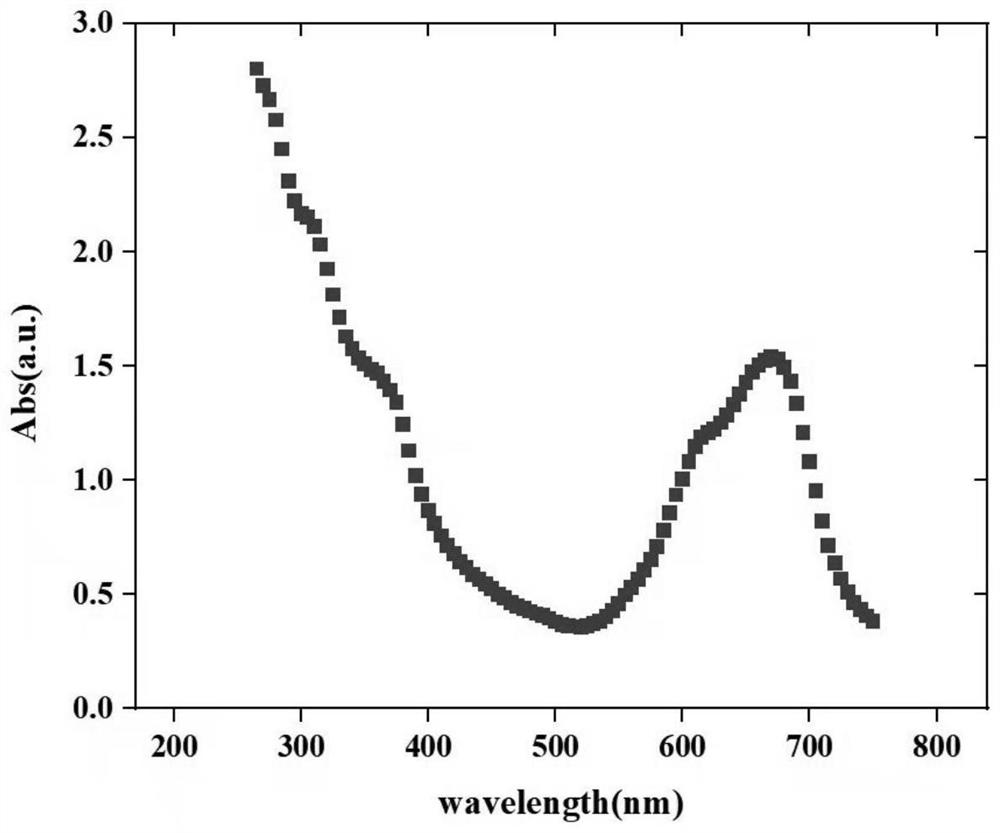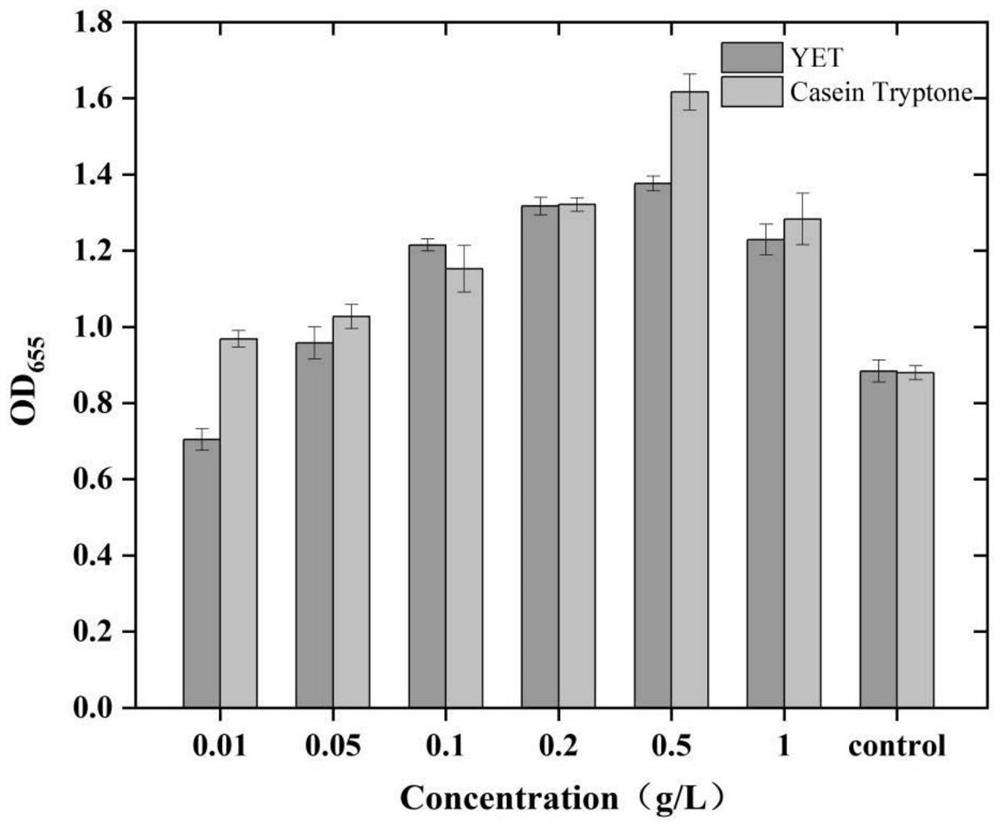Method for detecting coliform
A coliform and concentration technology, which is applied in the preparation of test samples, color/spectral characteristic measurement, and resistance to vector-borne diseases, etc., can solve the problem of inability to accurately measure low-concentration colonies, multi-scenario detection application limitations, and difficult To achieve the ideal effect and other problems, to achieve the effect of low reagent price, few types, and low cost-effectiveness ratio
- Summary
- Abstract
- Description
- Claims
- Application Information
AI Technical Summary
Problems solved by technology
Method used
Image
Examples
Embodiment 1
[0047] The compounds of the present invention with good effect of inducing the expression of coliform β-galactosidase are screened. Select the following compound combinations (lactose, low-concentration glucose and IPTG can be induced): lactose (0.5, 1.0, 1.5, 2.0, 2.5, 3.0, 4.0, 5.0g / L), glucose (0.5, 1.0, 1.5, 2.0, 2.5 , 3.0, 4.0, 5.0g / L), lactose and glucose (mixed in equal amounts of 0.5, 1.0, 1.5, 2.0, 2.5, 3.0, 4.0, 5.0g / L), the preparation solvents were pure water, physiological saline (SPSS) ), SPSS+IPTG, PBS and PBS+IPTG five groups of solvents. The five groups of solvents were mixed with X-Gal to form a detection solution system. The concentration of IPTG added was 0.024g / L, and the concentration of X-Gal was 0.2g / L, and then the bacterial liquid was added and mixed (Escherichia coli ATCC25922), The bacterial concentration is 1.0×10 7 CFU / mL, cultured in a 37°C incubator shaker. The induction effect of different induction systems on coliform was determined. All r...
Embodiment 2
[0054] Screening of SPSS+IPTG and PBS+IPTG
[0055] In order to further verify the color rendering effect of SPSS+IPTG and PBS+IPTG detection systems, the bacterial concentration (Escherichia coli ATCC 25922) in both SPSS+IPTG and PBS+IPTG detection systems was 1×10 6 CFU / mL, IPTG concentrations were all 0.024g / L, and X-Gal concentrations were all 0.2g / L. Response appropriate time, record OD 655nm , see the results figure 2 .
[0056] figure 2 It shows that under the same conditions, the bacterial concentration is 1 × 10 6 In CFU / mL, PBS+IPTG was better than SPSS+IPTG, and the color rendering effect was better. Therefore, the PBS+IPTG detection system was selected.
Embodiment 3
[0058] Optimization of PBS+IPTG detection system
[0059] Further experiments found that in the 24h incubation time, the detection system of PBS+IPTG (without YET) in Examples 1 and 2 could only make the bacterial concentration 1.0×10 at the highest. 4 CFU / mL detection system color development (OD 655nm =0.030), wherein the IPTG concentration in the detection system was 0.024g / L, and the X-Gal concentration was 0.2g / L. The concentration of bacterial liquid after 24 hours was detected by plate counting method, and it was found that the number of bacterial colonies in the detection system decreased significantly after culturing for 24 hours, indicating that the bacteria died in the process of inducing color development. It is speculated that there may be antibacterial substances or Lack of nutrients makes the bacteria unable to maintain vitality in the detection system for a long time, and eventually some bacteria die, resulting in the inability to develop normal color. Theref...
PUM
| Property | Measurement | Unit |
|---|---|---|
| concentration | aaaaa | aaaaa |
| concentration | aaaaa | aaaaa |
| concentration | aaaaa | aaaaa |
Abstract
Description
Claims
Application Information
 Login to View More
Login to View More - R&D
- Intellectual Property
- Life Sciences
- Materials
- Tech Scout
- Unparalleled Data Quality
- Higher Quality Content
- 60% Fewer Hallucinations
Browse by: Latest US Patents, China's latest patents, Technical Efficacy Thesaurus, Application Domain, Technology Topic, Popular Technical Reports.
© 2025 PatSnap. All rights reserved.Legal|Privacy policy|Modern Slavery Act Transparency Statement|Sitemap|About US| Contact US: help@patsnap.com



